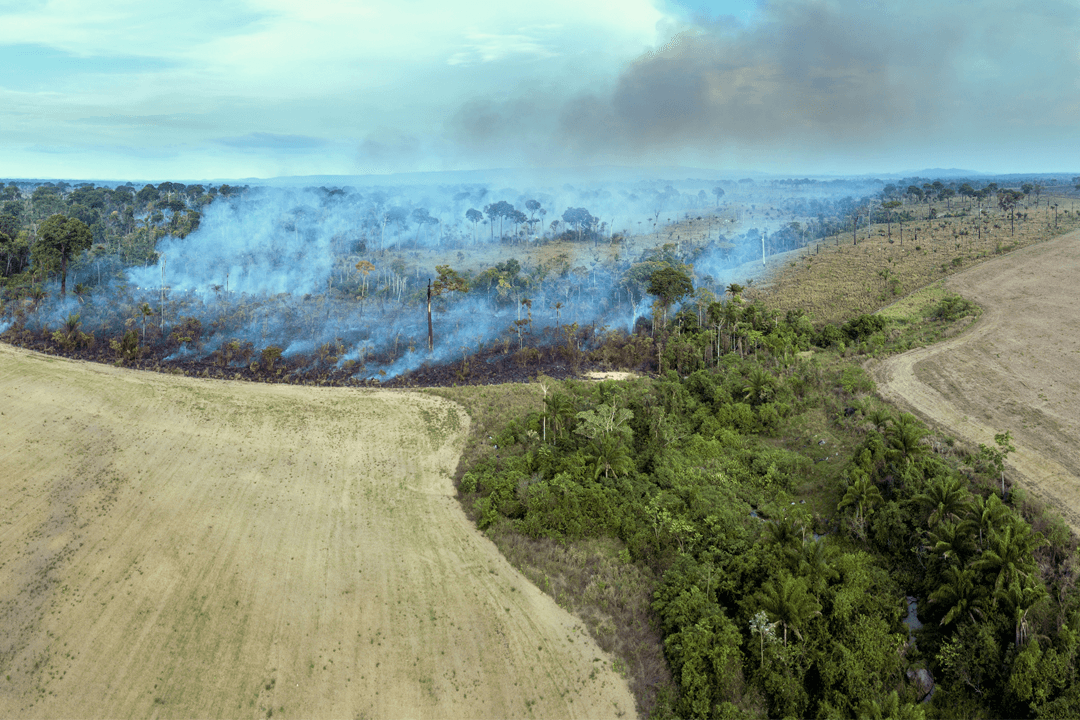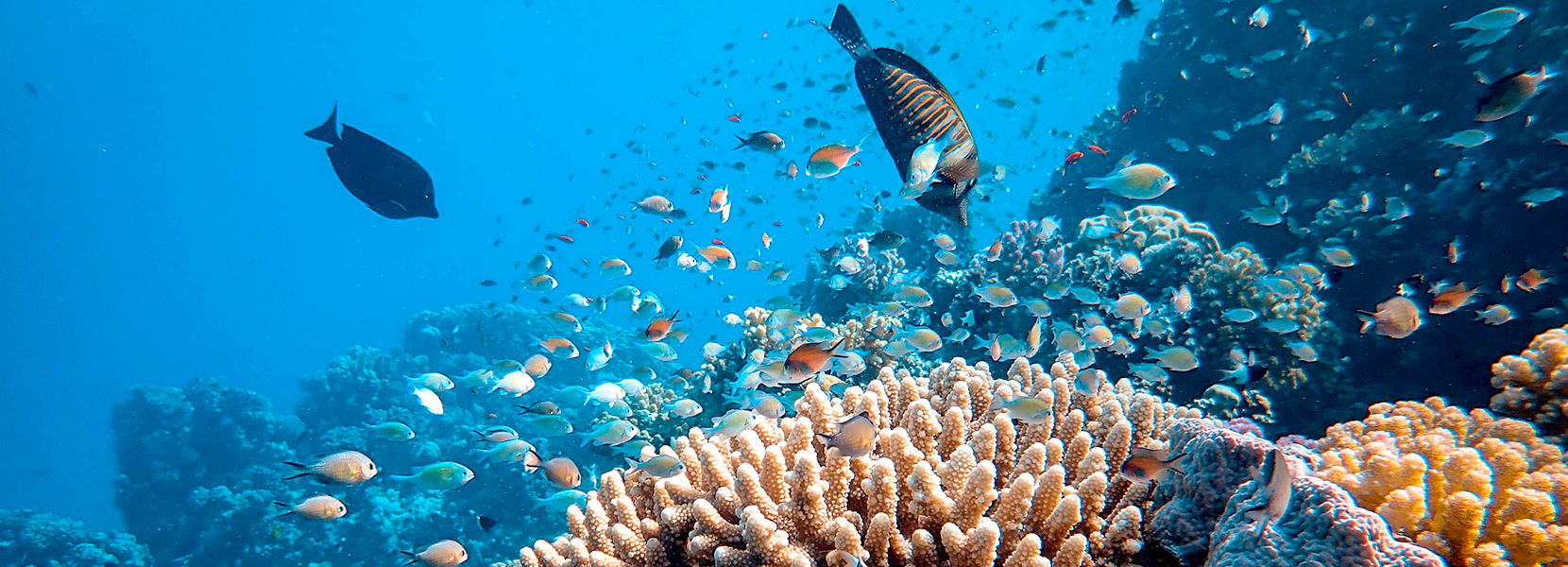The nexus between the climate and biodiversity crises

Illegal fires burn forest trees in the Amazon rainforest, Brazil. Aerial view of deforestation area for pasture, livestock and agriculture soy farm. Photo: PARALAXIS/Shutterstock
Human beings have massively changed Earth’s systems, and unprecedented weather extremes and loss of biodiversity continue to worsen. The climate and biodiversity crises are often viewed and discussed as two separate challanges, but these forces are closely intertwined, and together are responsible for consequences affecting the entire planet. An international review study published in the journal Science, “Overcoming the coupled climate and biodiversity crises and their societal impacts,” calls for adopting a perspective that factors these connections to better identify the issues and address solutions.
The study, led by Hans-Otto Pörtner Pörtner with the Alfred Wegener Institute, and with researchers contributing from King Abdullah University of Science and Technology (KAUST), is the outcome of an international working group jointly coordinated by two United Nations (UN)-affiliated organizations: the Intergovernmental Science-Policy Platform on Biodiversity and Ecosystem Services (IPBES); and the Intergovernmental Panel on Climate Change (IPPC).
Findings describe the rise of greenhouse-gas emissions and rapidly worsening loss of species with the aid of sobering figures: Each year, greenhouse-gas emissions amount to more than 55 gigatonnes of carbon dioxide equivalent; the current global mean temperature has increased by more than 1.1 degrees Celsius since the preindustrial era. The study estimates that human activities have altered roughly 75 percent of the land surface and 66 percent of the marine waters; approximately 80 percent of the biomass from wild mammals and 50 percent of wild plant biomass has been lost, while more species are in danger of extinction than at any time in human history. Impacts to ecosystems account for 38% of accumulated green-house emissions. In this regard, global warming and the destruction of natural habitats not only leads to biodiversity loss, but also reduces the capacity of organisms, soils and sediments to store carbon, which in turn exacerbates the climate crisis.
To address multiple environmental crises, study experts propose an ambitious, multipronged approach focused on emissions reduction, restoration and protection measures, intelligent land-use management, and the formation of cross-institutional alliances among environmental and political entities — strategies that would augment and support the Paris Agreement goal to limit Earth’s warming to 1.5-degrees Celsius while helping to achieve global biodiversity goals to conserve 30% of land and oceans, stop biodiversity losses and restore 30% of degraded habitats by 2030.
Distinguished Professor of Marine Science Dr. Dr. Carlos Duarte Duarte at KAUST is among the 18 co-authors who contributed to the study. Duarte applies his extensive expertise in oceanography and marine ecology to mitigate climate change and shape policy using nature-based solutions. His efforts were instrumental in delivering the outcome of the joint IPBES-IPPC effort — the first time these major entities have come together to address the nexus between the climate and biodiversity crises. He currently serves as the executive director of the Coral Research and Development Accelerator Program (CORDAP), established by the G20, which partners with distinguished organizations such as the UN Global Fund Global Fund for Coral Reefs for Coral Reefs to fast-track recovery solutions for coral reefs worldwide.

Corals are among the organisms dramatically affected by extreme weather events and warming oceans. Shown here, a healthy coral reef in the Red Sea. Photo: KAUST
Duarte referenced corals as a prime example of organisms that are dramatically affected by extreme weather events and warming oceans. “Corals can only shift their habitats gradually over the course of generations,” he said. “As the ocean becomes warmer and anoxic zones continue to expand, they are caught in a temperature trap, which means that large coral reefs could, in the long term, entirely disappear, exacerbating the vulnerability of our shorelines to sea level rise and increased storminess and impacting on the livelihoods of people across generations.”
Duarte and experts support the protection and restoration of at least 30 percent of all land, freshwater and marine zones and degraded habitats, proposing that a network of interconnected protected areas and migration corridors be established. Such a system would provide a buffer of biodiversity — an approach designed to boost recovery and regeneration and preserve natural ecosystems’ ability to function, which, in turn, will help to combat climate change.
“The research presented clearly shows the strong links between the biodiversity and climate crises and calls for comprehensive action plans that minimize unintended consequences,” Duarte said. “A key message is that nature-based solutions, which involve conserving and restoring ecosystems that act as CO2 sinks, must be activated with the highest ambition, as they generate both climate mitigation and biodiversity benefits while also delivering benefits to people.”
Hans-Otto Pörtner added that the extensive restoration of even 15 percent of the zones that have been converted for land use could be sufficient to prevent 60 percent of the expected extinction events. He also cautioned, “[These solutions] will only work if climate protection, biodiversity preservation, and social advantages for local communities are pursued simultaneously. We’re unlikely to reach the new global biodiversity, climate and sustainability targets planned for 2030 and 2050 if the individual institutions fail to collaborate more intensively. We urgently need a comprehensive approach if we hope to reach the targets.”

